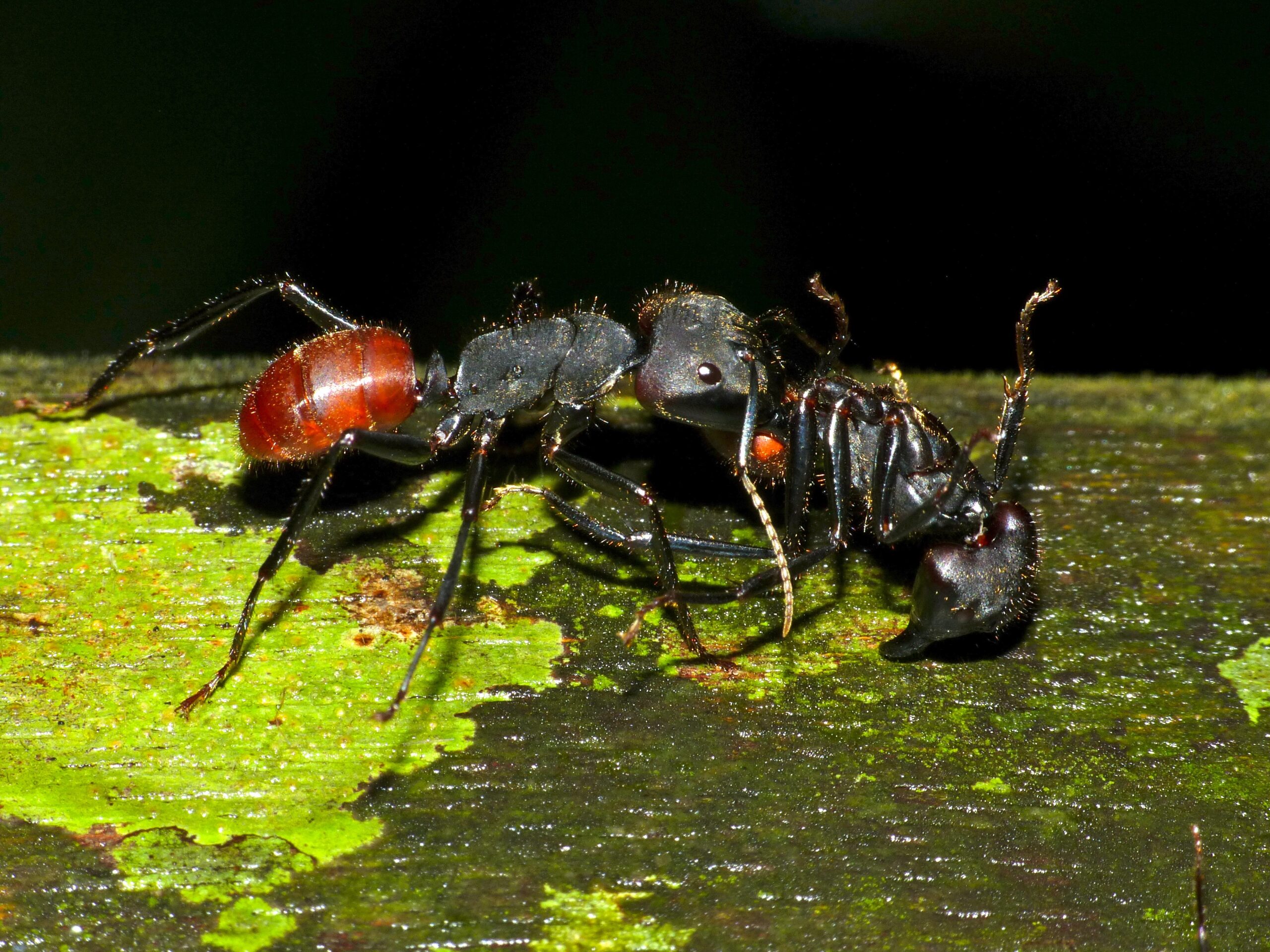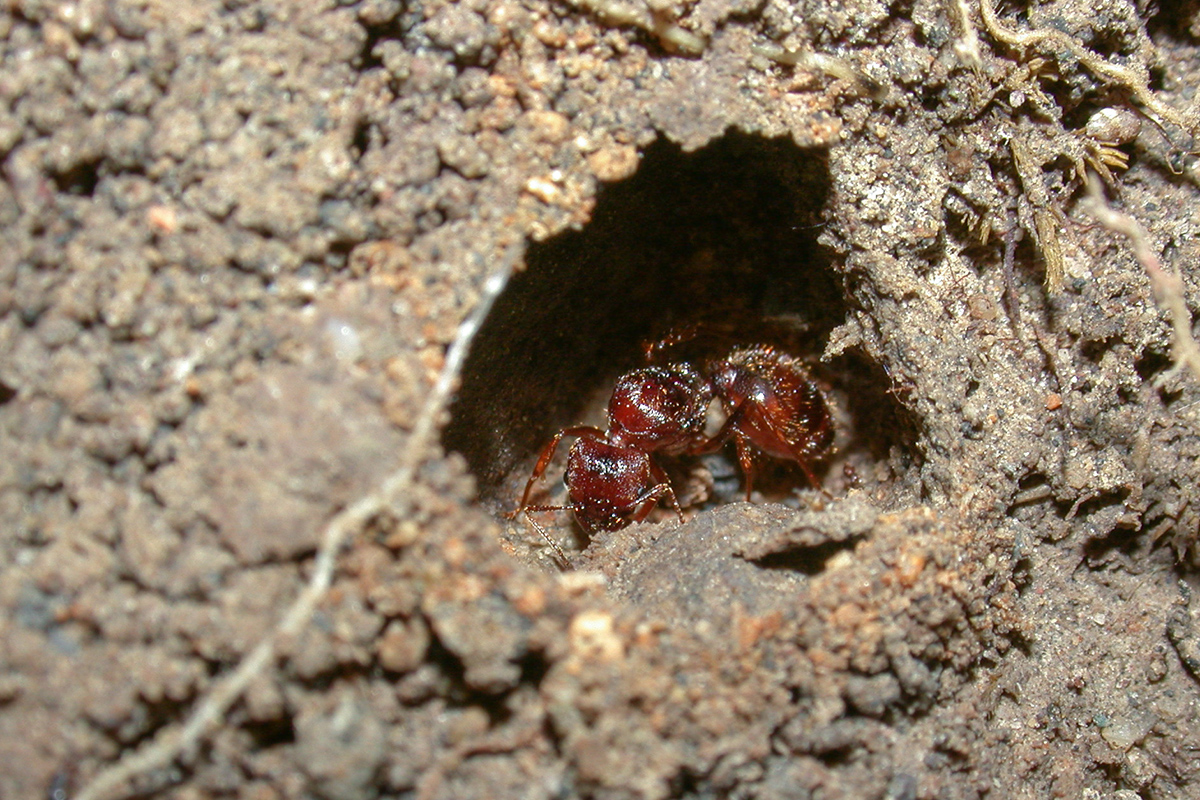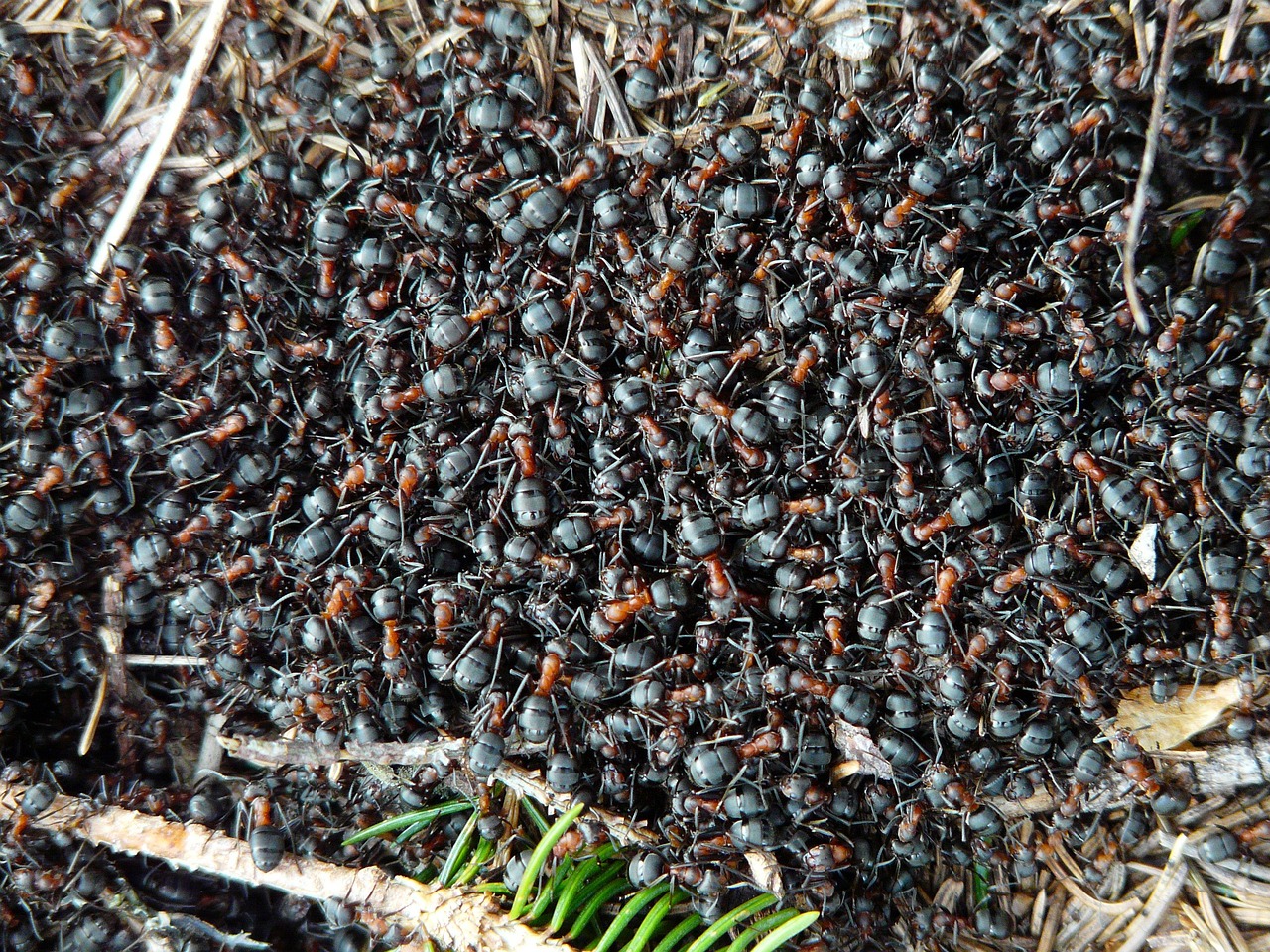In the bustling underground cities of ant colonies, death is not just an ending—it’s a potential catastrophe waiting to happen. While we humans might view death as a natural conclusion to life, for ants living in densely packed societies of thousands or even millions, a single corpse can spell doom for the entire community. These tiny architects of the earth have evolved one of nature’s most sophisticated funeral systems, transforming what could be a deadly threat into a carefully orchestrated burial ceremony that would make human morticians proud.
The Silent Threat of Death in Ant Society

When an ant dies within the colony, it doesn’t simply fade away peacefully like leaves falling in autumn. The decomposing corpse becomes a breeding ground for deadly bacteria, fungi, and parasites that can spread through the colony faster than wildfire through dry grass. Imagine living in a crowded apartment building where someone dies and nobody removes the body—the health risks would be catastrophic. For ants, this scenario plays out regularly, making their burial practices not just cultural traditions but survival necessities. The chemical signals released by decomposing ants can also confuse the colony’s communication system, creating chaos in their precisely organized world.
Meet the Professional Undertakers
Not every ant gets to be an undertaker—this specialized job falls to specific worker ants who have developed an extraordinary sensitivity to the chemical signatures of death. These funeral specialists can detect the oleic acid and other compounds released by dead ants from remarkable distances, almost like having supernatural powers for sensing mortality. Their antennae act like sophisticated chemical detectors, picking up concentrations of death-related compounds that would be invisible to other colony members. Once they receive this chemical distress signal, these undertaker ants abandon whatever task they were performing and rush toward the source with single-minded determination.
The Chemistry of Death Detection
The science behind how ants detect death reads like something from a forensic investigation manual. When an ant dies, its body immediately begins releasing oleic acid, a fatty acid that acts like a neon sign screaming “danger” to the colony. This chemical signature is so powerful and specific that researchers have been able to fool living ants by dabbing them with oleic acid, causing their own sisters to treat them as corpses. The concentration of these death chemicals increases rapidly after death, creating an urgent timeline for removal before the threat becomes overwhelming. Scientists have discovered that different species of ants can detect varying concentrations of these compounds, with some being able to sense death within minutes of occurrence.
Burial Rituals That Rival Human Ceremonies
The actual burial process performed by ant undertakers involves intricate behaviors that seem almost ceremonial in their precision. Multiple worker ants will typically collaborate to move larger corpses, forming organized chains that pass the body from ant to ant like firefighters passing buckets of water. They don’t simply dump the dead anywhere—specific burial sites are chosen based on factors like distance from the colony, soil composition, and wind patterns that could carry dangerous spores back home. Some species even cover their dead with soil, leaves, or other organic matter, creating what essentially amounts to tiny ant graveyards. The entire process can take anywhere from a few minutes to several hours, depending on the size of the corpse and the distance to the burial site.
Species-Specific Funeral Customs
Different ant species have developed their own unique approaches to handling death, creating a diverse array of funeral customs across the ant kingdom. Leafcutter ants, for example, have been observed creating specialized waste dumps that serve as both garbage disposal sites and cemeteries, keeping all potentially dangerous materials in designated areas far from their fungus gardens. Fire ants take a more aggressive approach, often dismembering corpses before burial to reduce the volume of material that needs to be transported and to speed up decomposition. Army ants, with their nomadic lifestyle, have developed rapid disposal techniques that allow them to deal with death quickly before moving on to new territories. Some desert species have even been observed burying their dead in sand dunes, using the natural shifting of sand to help conceal and preserve the burial sites.
The Distance Game: How Far Is Far Enough?

Ant undertakers don’t just randomly wander around looking for burial spots—they follow strict distance protocols that would impress military strategists. Research has shown that most species carry their dead at least 10 to 20 times their own body length away from the colony entrance, though some species travel much farther when the threat level is high. This distance calculation seems to be instinctively programmed into their behavior, taking into account factors like wind direction, colony size, and the type of pathogen threat posed by the corpse. The larger the colony, the farther the burial site tends to be, as if these tiny insects understand the mathematical relationship between population density and disease transmission risk. Some species have been observed creating multiple burial sites in different directions from their colonies, essentially building networks of ant cemeteries.
Underground Cemeteries and Waste Management

The most sophisticated ant species have developed elaborate underground waste management systems that include dedicated chambers for corpse disposal. These subterranean cemeteries are marvels of engineering, featuring ventilation systems that prevent the buildup of toxic gases and drainage systems that manage moisture levels to control decomposition rates. Some species maintain these burial chambers for years, continuously adding new corpses while older remains decompose and become part of the soil ecosystem. The positioning of these chambers within the colony architecture is carefully planned, typically located in areas with good drainage and far from food storage areas and nurseries where young ants develop. These underground morgues represent some of the most advanced waste management systems found in the animal kingdom.
The Surprising Benefits of Ant Burials
What started as a survival necessity has evolved into a practice that provides unexpected benefits to both ant colonies and the broader ecosystem. The nutrients from decomposing ant bodies enrich the soil in burial areas, creating fertile patches that support plant growth and benefit other organisms in the environment. This nutrient cycling means that ant burial grounds often become hotspots of biological activity, supporting diverse communities of microorganisms, plants, and other insects. Some plant species have even evolved to take advantage of these ant cemeteries, growing preferentially in areas where ants have been burying their dead for generations. The burial process also helps control populations of scavenging insects and other organisms that might otherwise become pests in the ecosystem.
Disease Prevention: The Ultimate Motivation

The primary driving force behind ant burial behavior is the prevention of disease outbreaks that could devastate entire colonies. Fungal infections pose particularly serious threats to ant societies, as spores can spread rapidly through the humid, crowded conditions of underground colonies. By removing corpses quickly and burying them at safe distances, undertaker ants essentially create quarantine zones that protect the living population from exposure to deadly pathogens. Some of the fungi that attack ants are so virulent they can kill an entire colony within days if allowed to spread unchecked, making the undertakers’ work literally a matter of life and death for thousands of individuals. The speed and efficiency of these burial operations often mean the difference between a minor loss and a complete colony collapse.
Communication During the Burial Process
The coordination required for effective corpse removal involves sophisticated communication systems that showcase the remarkable intelligence of ant societies. Undertaker ants use a combination of chemical signals, touch communication, and even sound vibrations to organize their burial operations. When a corpse is discovered, the finder ant releases specific pheromones that recruit additional workers to help with removal, creating chemical trails that guide reinforcements to the scene. The intensity and composition of these chemical signals can convey information about the size of the corpse, the urgency of removal, and even the type of threat it might pose to the colony. This communication system allows even large corpses to be removed efficiently through coordinated team efforts that rival human emergency response systems.
Seasonal Variations in Burial Behavior
Ant burial practices change dramatically with the seasons, adapting to environmental conditions that affect both the risk of disease and the logistics of corpse disposal. During hot summer months, decomposition happens much faster, forcing undertaker ants to work with greater urgency and often travel farther to burial sites to ensure adequate protection for the colony. Winter brings different challenges, as frozen ground makes burial more difficult and slower decomposition rates mean corpses pose threats for longer periods. Some species have been observed storing corpses in special chambers during winter months when burial is impossible, essentially creating temporary morgues until spring conditions allow for proper interment. Rainy seasons present their own complications, as wet conditions can wash buried corpses back toward colonies or create flooding in underground burial chambers.
The Evolution of Funeral Behavior
The burial behaviors we see in modern ant species represent millions of years of evolutionary refinement, shaped by countless generations of natural selection favoring colonies with effective corpse disposal systems. Early ant species likely had much simpler approaches to dealing with death, perhaps simply moving corpses away from nest entrances without the sophisticated burial rituals we observe today. Over time, colonies with more effective funeral practices survived and reproduced more successfully, gradually developing the complex behaviors we witness in contemporary species. Genetic studies suggest that the genes controlling burial behavior are deeply embedded in ant DNA, indicating that this trait has been under strong evolutionary pressure for millions of years. The diversity of burial practices across different species shows how evolution has fine-tuned these behaviors to match specific environmental challenges and colony structures.
Research Revelations and Scientific Discoveries

Recent scientific studies have revealed shocking details about ant burial behavior that have forced researchers to completely reconsider the intelligence and complexity of these tiny insects. High-speed cameras have captured footage showing that some ant species actually perform quality control checks on burial sites, returning to inspect graves and sometimes moving corpses to different locations if the original burial proves inadequate. Genetic analysis of soil samples from ant cemeteries has revealed that these burial grounds support unique microbial communities that help break down organic matter more efficiently than surrounding areas. Perhaps most surprising, some researchers have documented cases of ants appearing to mourn their dead, lingering near corpses before burial in behaviors that seem to serve no practical survival purpose. These discoveries challenge our assumptions about insect emotions and suggest that ant funeral behavior may be even more complex than previously imagined.
Human Lessons from Ant Undertakers

The sophisticated waste management and disease prevention strategies employed by ant undertakers offer valuable insights for human public health and urban planning initiatives. Cities struggling with waste management could learn from the efficiency and organization of ant burial systems, particularly the principle of maintaining safe distances between waste disposal sites and living areas. Medical researchers studying disease transmission have found that ant quarantine strategies could inform human pandemic response protocols, especially in crowded urban environments where disease can spread rapidly. The coordination and communication systems used by ant undertakers also provide models for emergency response teams, showing how clear roles and rapid communication can make the difference between minor incidents and major disasters. Some biotechnology companies are even studying the chemical detection systems used by undertaker ants to develop new sensors for detecting biological hazards in human environments.
The Future of Ant Cemetery Research

Scientists are only beginning to understand the full complexity of ant burial behavior, with new discoveries emerging regularly that challenge our assumptions about insect intelligence and social organization. Advanced imaging techniques are allowing researchers to study underground ant cemeteries without disturbing them, revealing architectural details and long-term maintenance behaviors that were previously invisible. Genetic sequencing projects are identifying the specific genes that control undertaker behavior, potentially leading to insights about how complex social behaviors evolve and are maintained across generations. Climate change research is also examining how changing environmental conditions might affect ant burial practices, as shifting temperature and precipitation patterns could disrupt the delicate balance between decomposition rates and burial logistics. The integration of artificial intelligence and machine learning into ant behavior studies promises to reveal patterns and connections in burial behavior that human researchers might never notice on their own.
The next time you see ants marching across a sidewalk, remember that among them might be specialized undertakers whose job is literally to protect their entire civilization from the threat of death itself. These tiny funeral directors work tirelessly to maintain the health and survival of their colonies, using strategies that are both ancient and surprisingly sophisticated. In a world where humans often struggle with waste management and disease prevention, perhaps we should pay closer attention to the lessons these insect undertakers have been teaching for millions of years. What other secrets might be hiding in the underground cities beneath our feet?
